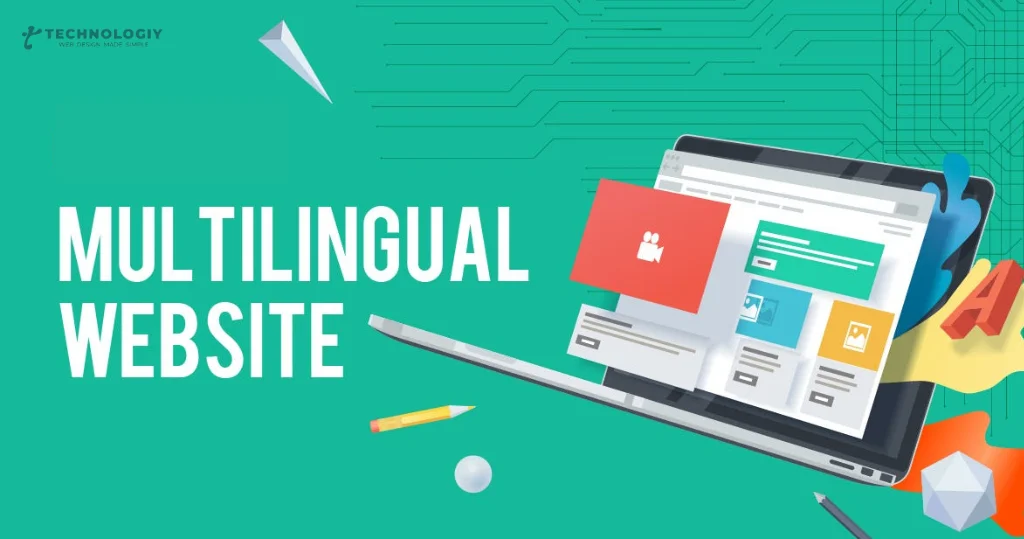The Power of Multilingual Website Development In today’s globalized world, businesses need to reach a wider audience to stay competitive. One effective way to achieve this is through multilingual website development. By creating a website that caters to different languages, companies can tap into new markets and connect with potential customers from around the world. In this blog post, we will explore the power of multilingual website development and why it is essential for businesses in the digital age.
Expand Your Reach:
By developing a multilingual website, you can instantly expand your reach beyond your native language. This means that potential customers who do not speak your language can still engage with your content and products. With the internet connecting people from all corners of the globe, it is crucial to adapt your website to cater to different languages and cultures.
Increase Conversion Rates:
Studies have shown that people are more likely to stay on a website and make a purchase if it is in their native language. By providing content in multiple languages, you are removing language barriers and making it easier for potential customers to understand and engage with your brand. This can significantly increase your conversion rates and ultimately drive more sales.
Improve User Experience:
A multilingual website shows that you value your customers and their diverse backgrounds. By providing content in their native language, you are creating a user-friendly experience that resonates with them. This can lead to higher customer satisfaction and loyalty, as your website becomes a go-to resource for information and products in their preferred language.
Enhance SEO:
Multilingual website development can have a positive impact on your search engine optimization (SEO) efforts. By targeting keywords in multiple languages, you are increasing your chances of ranking higher in international search results. This can result in more organic traffic from different countries, leading to increased brand visibility and potential business opportunities.
Stay Ahead of Competitors:
In today’s competitive landscape, businesses that embrace multilingual website development gain a significant advantage over their competitors. By offering content in multiple languages, you are positioning yourself as a global brand that understands and caters to diverse customer needs. This can help you stand out from the crowd and attract customers who are looking for a personalized and inclusive experience.
Assessing the Need for Multilingualism:
Unlocking the Potential of Multilingual Website DevelopmentIn today’s globalized world, businesses have a tremendous opportunity to expand their reach and connect with a wider audience. One powerful way to do so is by embracing multilingualism and developing a multilingual website. With the rise of technology and the internet, breaking language barriers has become easier than ever before. In this blog post, we will explore the importance of assessing the need for multilingualism and how multilingual website development can unlock the potential of your business.
Why Multilingualism Matters?
As the world becomes increasingly interconnected, multilingualism has become a necessity rather than a luxury.
Here are a few key reasons why assessing the need for multilingualism is crucial for businesses:
Global Reach:
By offering your website in multiple languages, you can reach a broader audience across different regions and cultures. This means that potential customers who may not be fluent in your website’s default language can still access your content, products, and services.

Competitive Advantage:
In today’s highly competitive marketplace, standing out from the crowd is essential. By embracing multilingualism, you can gain a competitive edge over your competitors who may not have expanded their website’s language capabilities.
Improved User Experience:
When users can access information in their native language, they are more likely to engage with your website and stay longer. By offering a seamless user experience in multiple languages, you can increase customer satisfaction and encourage repeat visits.
Increased Conversions:
Studies have shown that customers are more likely to make a purchase or take a desired action when the content is presented in their native language. By providing a multilingual website, you can enhance your conversion rates and drive more revenue for your business.
let’s dive into how multilingual website development can unlock the potential of your business:
Content Localization:
Translating your website’s content accurately and effectively is the first step towards building a successful multilingual website. This involves adapting not just the words, but also the cultural nuances and context to ensure your message resonates with your target audience.
User-friendly Language Switching:
Implementing a user-friendly language-switching feature on your website allows visitors to easily switch between languages. This feature should be intuitive, prominently displayed, and seamlessly integrated into your website’s design.
SEO Optimization in Multiple Languages:
Just like in your default language, optimizing your website for search engines in multiple languages is crucial. Conducting keyword research and implementing SEO strategies specific to each language will help ensure your website ranks well in search engine results across different regions.
Responsive Design for Multilingual Content:
It’s important to ensure that your multilingual website is responsive and adapts well to different screen sizes and devices. This will provide a consistent and user-friendly experience to visitors, regardless of the language they choose.
Continuous Updates and Localization Efforts:
Languages evolve, and so should your multilingual website. Regularly updating and localizing your content to keep up with cultural trends, language changes, and user preferences will help you maintain relevance and engage your audience effectively.
Assessing the need for multilingualism is crucial for businesses looking to expand their reach and connect with a global audience. With the power of multilingual website development, you can unlock the potential for growth, competitiveness, and customer satisfaction. By investing in content localization, user-friendly language switching, SEO optimization, responsive design, and continuous updates, your business can thrive in the multilingual digital landscape. Embrace multilingualism and take your business to new heights!
Multilingual Website Development:
Unleashing the Power of SEO StrategiesIn today’s globalized world, businesses are expanding their reach beyond borders like never before. With the rise of the internet, companies of all sizes have the opportunity to tap into international markets and connect with a diverse range of customers. To effectively engage with a multilingual audience, implementing strong SEO strategies for multilingual sites is crucial. In this blog post, we will explore the importance of multilingual website development and how SEO can be leveraged to maximize visibility and drive organic traffic.
Multilingual website development refers to the process of creating and optimizing websites that cater to multiple languages. This approach allows businesses to connect with a global audience, increasing their chances of attracting potential customers from different regions. However, merely translating your website’s content into various languages is not enough. To truly harness the power of multilingual website development, it is imperative to implement effective SEO strategies.
Keyword Research:
The Foundation of Multilingual SEO Keyword research is the cornerstone of any successful SEO campaign, and it becomes even more critical when targeting multilingual audiences. By conducting thorough keyword research for each target language, businesses can identify relevant search terms that resonate with their international audience. Utilizing SEO tools and analytics, website owners can uncover high-volume keywords and long-tail phrases in different languages. By incorporating these keywords into their multilingual website’s content, businesses can enhance their visibility in search engine results pages (SERPs) and attract organic traffic.
Localized Content:
Speaking the Language of Your Audience When developing a multilingual website, it is essential to create localized content that resonates with your target audience. Simply translating the content might lead to inaccuracies or cultural insensitivities, which can have a negative impact on user experience and SEO. To create culturally relevant content, it is crucial to work with native speakers or professional translators who are well-versed in the target language and culture. By doing so, businesses can ensure that their multilingual website delivers an authentic and engaging experience, leading to higher user engagement, longer session durations, and ultimately, improved search engine rankings.
Hreflang Tags:
Guiding Search Engines to the Right Language Version Hreflang tags are HTML attributes that indicate to search engines which language versions of a webpage exist and how they relate to each other. Implementing hreflang tags correctly is vital for multilingual websites, as it helps search engines serve the appropriate language version to users based on their location and language preferences. By providing search engines with clear signals about the language variations of your web pages, you can avoid content duplication issues and improve the overall SEO performance of your multilingual site.
Optimized URL Structure:
Streamlining Language Switching Ensuring a properly organized URL is crucial for enhancing both the user experience and optimizing search engines (SEO). For multilingual websites, implementing an optimized URL structure that reflects the language variation is crucial. Using subdirectories or subdomains specific to each language is a recommended practice, as it allows search engines and users to easily identify the language version of a webpage. For example, website.com/en/ for English, website.com/fr/ for French, etc. By structuring your URLs in this manner, you can streamline the language-switching process, enhance user experience, and improve your multilingual website’s visibility.
Local Link Building:
Building Authority in Different Regions Link building plays a pivotal role in SEO, and this holds true for multilingual websites as well. Building a strong backlink profile in different regions and languages can significantly boost your website’s authority and rankings. Engage with local influencers, bloggers, and industry-specific websites in your target regions to secure high-quality backlinks. Additionally, ensure that your multilingual website is listed in relevant local directories and citation sources. By implementing a robust local link-building strategy, you can improve your website’s visibility, drive targeted traffic, and ultimately, increase conversions.
In conclusion, multilingual website development presents a tremendous opportunity for businesses to expand their reach internationally. By implementing effective SEO strategies tailored to multilingual sites, businesses can maximize their visibility, attract organic traffic, and engage with a diverse range of customers. From conducting keyword research to creating localized content, optimizing URL structures, and building local links, every SEO component contributes to the overall success of a multilingual website. Embrace the power of multilingual SEO today and unlock the full potential of your online presence!
